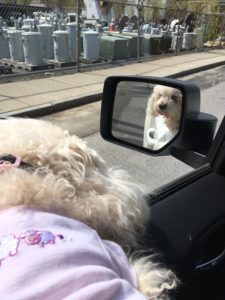So far, my writing here has focused on caring for ailing pets, preparing for their passing, and caring for ourselves as we approach this journey. There’s one subject that I haven’t touched on yet, though, and it’s a difficult one to talk about, but also incredibly important, so I’m going to focus on it for the next few posts.
It’s hard to think about caring for our beloved pets after they pass, but unfortunately it’s something that every caregiver needs to face eventually. Many people have no idea what their options are when it comes to aftercare, and being confronted with this painful question for the first time when you’re also dealing with the immediate grief of having just lost your pet can make it even more traumatic. Nothing is more tragic than regretting a decision made in haste, without the necessary information, time, and thoughtfulness to choose the best path to honor both your wishes and your bond with your pet.
With that in mind, I’m going to talk here about the most common paths available to care for your pets after they pass. I’ll go into detail about specific choices, and some less common paths, in a future post, but it’s vitally important that all pet caregivers be informed about the choices available to them on this subject.
Here in Massachusetts there are a few pet cemeteries that veterinarians work with. Many people have questions about such facilities; don’t be afraid to ask your veterinarian about the pet cemetery that they work with. Your vet should be able to tell you the name of the facility, as well as discuss their practices, and answer any questions that you have about your pet’s care. You can also visit their grounds yourself, if you want to see where your pet will be cared for and meet the staff – this can be a good way to address any concerns, as well as a beautiful way to honor the pets already cared for there.
Almost all pet cemeteries offer the following care options:
-Private burial: Most cemeteries have beautiful grounds where you can have your pet laid to rest in their own private plot. Because this does involve more preparation, as well as ongoing care, if this is what you wish for your pet you should discuss this with your veterinarian earlier in the course of your hospice relationship. They should be able to help you get in touch with the appropriate staff at the pet cemetery, in order to make the necessary plans.
-Burial with other pets: If you are a member of a faith that does not permit cremation, or if such is not appealing to you, this can be a respectful way to lay your pet to rest without the concerns of arranging for a private burial.
-Cremation with other pets: When a pet is cared for in this fashion, their ashes are generally laid to rest on the cemetery grounds. If you do not wish to have your pet returned to you, this can be a very thoughtful, respectful way to care for them. Many crematories also allow for small personal items (letters, pictures, favorite toys, or blankets) to be cremated with the pet, which can be a beautiful final ritual or memorial.
-Private cremation: In this situation, the pet is cremated alone, and the ashes are returned to the family. As above, most crematories allow the family to send personal items with the pets; they also can have many options for vessels to hold the ashes. You can discuss this with your vet or the crematory staff, either before or after – if you’re not emotionally ready for such questions at the time of passing, ashes can always be transferred later. This may be a touching way to honor a pet’s memory, on their birthday or the anniversary of their passing. Many crematories also offer scheduled private cremation, if you wish to be present.
The most important thing to keep in mind, when facing this decision, is that in every situation your pet will be handled with compassion, respect, and dignity. Both your veterinarian and the staff of the facility that they use will treat your pet as the beloved being they are, whatever path you choose for their care. If you have any questions about aftercare – about what’s involved, what your choices are, or how to handle the situation in the best manner for your and your pet’s wishes, please reach out to your veterinarian. By considering these questions in advance, when it does come time to face your pet’s passing you can focus on the emotions of the moment instead of worrying about additional decision-making.








